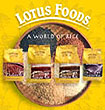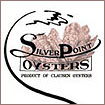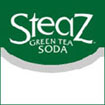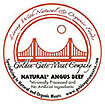
Botox, Diabetes, Migraine Relief, Heart Health,
Weight Loss, More
Headlines
(Scroll down for complete stories):
1. Botox May Help Migraine
Sufferers
2. Too Much Exercise Could
Wear Out Your Heart
3. Eating Fish May Help
Maintain Heart Rhythm
4. Is it Possible to 'Burn
Away' Certain Cancers?
5. Low Glycemic Index Diet
Best at Reducing Weight
6. Smaller Plates Curb Appetite
7. New Procedure May Mean
Fewer Open Heart Surgeries
8. Study IDs Cancer-Spreading
Protein
1.
Botox May Help Migraine Sufferers
Botox may help fix both wrinkles and migraine
headache pain, stated Dr. Richard Glogau, professor
of dermatology at UCSF at the 2005 annual meeting
of the American Society of Dermatologic Surgery.
Glogau followed 24 migraine-stricken patients
from his practice who received Botox treatments
for cosmetic purposes. Botox is a purified and
diluted form of the Botulinum toxin A (the same
bacteria that can cause deadly food poisoning)
which has successfully reduced the appearance
of wrinkles in the forehead, eye, and mouth areas
since 1992.
Each of Glogau's subjects had a long-standing
diagnoses of migraines, each had been to
a neurologist, and each was taking standard
migraine medications.
His results indicate that Botox injections into
the brow, eye region, forehead, sides, and back
of the head may provide significant migraine relief
for up to six months. In this case, the average
dosage was 80 units per patients.
The dermatologist's findings followed on the heels
of two previous reports presented to the American
Association for the Study of Headache.
In the first study, researchers at the Michigan
Head Pain and Neurological Institute in Anne Arbor
and Michigan State University used a 25 unit dosage
which helped decrease the severity of pain and
vomiting by sufferers for up to three months.
The second test by the University of California
tried a 75 unit dose and reported that 96 percent
of patients received relief, with some claiming
to be migraine free for a limited period of time.
"It doesn't work on everyone and it doesn't
work on all headaches," Glogau said. He added
that more studies are needed since there are no
published, randomized double-blind trials that
prove the safety and efficacy of Botox for the
treatment of migraines.
2. Too Much Exercise Could Wear Out Your
Heart
Biologists used to think the human heart never
got tired, beating ceaselessly from birth until
death unless somehow damaged. But now a study
suggests this is not necessarily so.
The Washington Post reports that an "unusual"
group of people took part in an experiment that
proves "if you flog the heart long and hard
enough, it will tire. A little."
Euan A. Ashley, a Stanford University cardiologist,
and a group of English, Scottish, Austrian, and
American colleagues, studied people who finished
the 2001 Adrenalin Rush, a 300-mile adventure
race in the Scottish Highlands.
The race participants - in teams of four made
up of both men and women - hike, run, ride horses,
kayak, swim, bike, and rappel with ropes off rock
faces to complete the competition.
Only about half the 120-odd starters made it to
the finish. Before and after, the researchers
took many measurements, including ultrasound pictures
of the athletes' hearts.
Astonishingly, by the time the athletes were through
racing, their hearts contracted one-fifth less,
on average - a clear sign of a fatigued muscle.
The hearts were also beating faster to compensate
for the weakened state of the muscular pump.
By 48 hours later, the signs of heart-muscle fatigue
were starting to reverse.
The study is in the Journal of the American College
of Cardiology.
3.
Eating Fish May Help Maintain Heart Rhythm
Eating tuna or other fish, broiled or baked, appears
to have a beneficial effect on the electrical
system of the heart, which may help prevent life-threatening
heart rhythm disorders, according to a new report.
Evidence from animal studies has suggested a direct
effect from fish oil intake on the hearts electrical
circuitry.
As reported in the Journal of the American College
of Cardiology, Dr. Dariush Mozaffarian, of Harvard
Medical School, Boston, and colleagues analyzed
data from 5,096 adults enrolled in the Cardiovascular
Health Study to investigate the link between dietary
intake of fish n-3 fatty acid and features seen
on electrocardiograms.
Intake of the fish at least once a week was associated
with a slower heart rate than eating these fish
less than once a month.
Moreover, fish intake at least five times per
week was associated with an even healthier heart
rhythm. Consumption of marine n-3 fatty acids
appeared to have similar effects.
Intake of fried fish was not associated with any
ECG changes.
Copyright Reuters 2006.
4.
Is it Possible to 'Burn Away' Certain Cancers?
Many men with testicular cancer beat the odds
of survival. And researchers at Johns Hopkins
University think they know why - heat.
In general, the testes are a few degrees cooler
than the rest of the body. And, in a phenomenon
dubbed the 'Lance Armstrong effect,' after the
seven-time Tour de France winner who survived
the cancer, experts believe that there is a direct
correlation between those cancerous cells and
temperature.
Johns Hopkins professor Robert Getzenberg and
his colleagues recently stated in the Journal
of the American Medical Association that their
evidence suggests that testicular cancer cells
may become weakened by hypothermia (a directed
type of heat). This makes those cells more susceptible
to chemotherapy and radiation treatments.
"We tried to put our heads together about
what we know about the differences between testicular
and other cancers," said Getzenberg. "There
is an amazing difference in treatment success
and we wanted to come up with a single idea that
has biological basis."
Getzenberg's team is using nanotechnology to directly
target cancer cells with iron particles. Once
attached to the malignant cells, the heat produces
an external magnetic field to hopefully weaken
them for more effective treatment.
To be successful, the heat therapy must be targeted
to cancer cells only while leaving healthy cells
unharmed. Nanoparticles may provide a way of achieving
this goal.
"The advantages are you don't have to put
them in every cell as long as you are getting
a warming environment," Gatzenberg said.
He is currently assessing the treatment for other
types of malignancies including bladder cancer.
Ed Yong, cancer information officer at Cancer
Research U.K. said "Nanotechnology is a very
exciting new field of science and it is set to
play an increasing role in detecting and treating
cancers."
5.
Low Glycemic Index Diet Best at Reducing Weight
A diet rich in carbohydrates with a low glycemic
index appears to be more effective in reducing
fat mass and lowering the chances of developing
cardiovascular disease (CVD) than diets with a
high glycemic index or high in protein, an Australian
research team reports.
The glycemic index of a food indicates how quickly
it is broken down and causes a rise in sugar levels
in the blood. Generally, low glycemic index foods
are complex carbs like whole grains, rather than
refined sugars, for example.
According to a paper in the Archives of Internal
Medicine, Dr. Jennie Brand-Miller, at the
University of Sydney, and colleagues conducted
a trial in which 129 overweight subjects ages
18 to 40 were randomly assigned to one of four
weight-loss diets for 12 weeks.
Brand-Miller and her team report that the diets
resulted in similar reductions in weight. However,
in the high-carbohydrate diets, lowering the glycemic
load doubled the fat loss. The investigators also
found that total and LDL ("bad") cholesterol
levels decreased with a low glycemic load.
"In the short term, our findings suggest
that dietary glycemic load, and not just overall
energy intake, influences weight loss," the
team concludes.
Copyright Reuters 2006.
6.
Smaller Plates Curb Appetite
A huge weapon in the battle of the bulge may be
a small-size serving spoon!
A new study has found that the correct size of
serving bowls and spoons may help dieters avoid
overeating.
Brian Wansink, director of the Food and Brand
Lab at Cornell University threw an ice cream social
for his colleagues to find if using oversized
ice cream scoops and extra-large bowls would influence
how much ice cream volunteers dished up.
Eighty-five food and nutrition experts were given
either 17-ounce or 34-ounce bowls and either 2-ounce
or 3-ounce scoops and were allowed to serve themselves.
All but three finished all of their ice cream.
"Just doubling the size of someone's bowl
increased how much people took by 31 percent,"
said Brian Wansink, lead author and a consumer
researcher. "We also saw that giving people
a scoop that was a little bit larger increased
things by about 14.5 percent.
"Four ounces of ice cream in a small bowl
may appear an appropriate amount for a mid-afternoon
snack, but the same in a larger bowl may appear
too small, leading one to over-serve," said
Wansink.
The study's implications - that decreasing the
size of serving utensils may be an effective and
easy way to eat less - are even larger for the
average dieter since the volunteers were nutrition
experts who could estimate size and calories of
portions better than the majority of Americans.
7.
New Procedure May Mean Fewer Open Heart Surgeries
British doctors announced the successful use of
a tiny device to plug a gap in the ruptured wall
of a heart attack victim.
Traditionally, patients with an inner heart wall
rupture (which is often fatal) needed open heart
surgery, in which a patch is stitched over the
hole and requires surgeons to open up both sides
of the heart. It puts such strain on the body
that nearly half of those who undergo the procedure
die.
In this case, the 75-year-old man was originally
slated for a quadruple bypass surgery. However,
surgeons at the King's College Hospital in London
placed a 10 millimeter-long piece of rolled up
metal mesh into the hole of his heart wall via
an incision in the right heart.
The device was then unfolded so that it formed
an umbrella shape on either side of the wall,
with a segment that filled in the hole in the
middle.
Until now, the device was used only for children
with heart conditions or patients with long-term
holes in their hearts.
"This represents a huge step forward in the
treatment of heart rupture," said Dr. Olaf
Wendler, who performed the procedure along with
Dr. Jonathon Hill.
Approximately 1.25 million people suffer from
heart attacks each year in the United States,
according to the American Heart Association. Of
those, nearly 1 to 2 percent experience an inner
wall heart rupture.
Dr. Wendler said "Because we are now able
to use this less invasive approach we hope to
have better results in the future."
8.
Study IDs Cancer-Spreading Protein
Edinburgh scientists have identified the way a
specific cell protein can trigger the spread of
cancer. The study by researchers in the Cell Signalling
Unit, University of Edinburgh Cancer Research
Centre could pave the way for new drugs which
limit the protein's ability to turn a normal cell
cancerous.
MDM2 is a protein that usually controls the activity
of a key cancer preventing protein called p53.
But in certain cells, the biochemical ratio between
MDM2 and p53 can be upset, causing MDM2 to instead
function as a cancer-promoting agent.
The project's lead investigator, Dr Kathryn Ball,
a researcher at the University, explains: "One
way in which MDM2 controls the p53 protein is
by activating its destruction and we are interested
in understanding how this happens at a biochemical
level.
"In the current study, funded by Cancer Research
UK, we have identified protein fragments which
can bind to MDM2, inhibiting its activity. These
fragments could be a good template for drugs designed
to hinder the role of MDM2 in the p53 destruction
pathway. We hope our findings may lead to improved
treatments for a broad range of cancer types."



























